Introduction
- Books Name
- CBSE Class 6 Science Book
- Publication
- Param Publication
- Course
- CBSE Class 6
- Subject
- Science
Introduction
Animals can move from one place to another. This type of movement is called locomotion.
•Why do Animals Move?
Animals move from place to place for the following reasons :
1. In search of food and shelter.
2. To protect themselves against adverse climate conditions or an unfavourable place.
3. To protect themselves against their predators and enemies.
4. To find suitable partners for reproduction.
The hard parts of an animal body present inside or outside the body collectively form the skeletal system. Skeleton serves as the reservoir of many minerals, like calcium and phosphate. The marrow of the long bones is the site for the haemopoiesis, i.e., formation of blood cells (RBC, WBC). The skeleton plays a vital role in movement and locomotion. Human skeleton consists of 206 pieces of bones.
Do You Know :
When we are born we have more than 306 bones in our bodies. By the time we are grown up, they are about 206. Many of the infant’s bones get joined together or fused.
• The act of moving from place to place is known as locomotion.It involves the movement of the whole body, as in walking, running ,swimming or flying. Movement is the change in position of only a part of the body, as movement of stem towards light in plants.
Human Body and Its Movements
- Books Name
- CBSE Class 6 Science Book
- Publication
- Param Publication
- Course
- CBSE Class 6
- Subject
- Science
Human Beings – Human Skeletal System
The human skeletal system consists of 206 bones which are supported and supplemented by muscles, cartilages, tendons and ligaments. The human skeleton is classified into two distinct parts, namely:
1. Axial skeleton
2. Appendicular skeleton
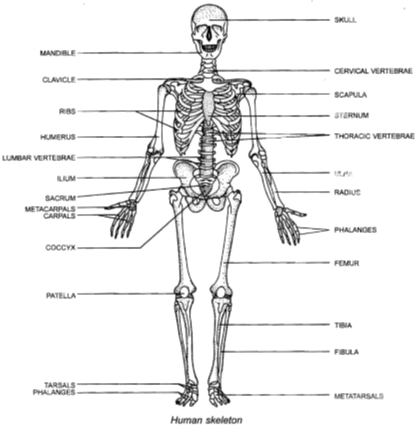
1. Axial Skeleton
It consists of bones of skull, vertebral column and chest.
• Skull : The human skull has 22 bones of which 8 are present in the cranium and 14 on the face. These bones protect the brain and sensory organs.
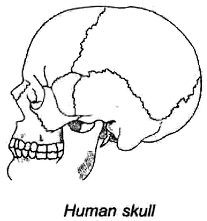
• Vertebral Column : It is made up of 33 ringshaped bones which are called vertebrae. These bones are arranged as follows.
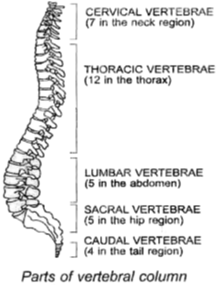
• Chest Bones : The first seven pairs of ribs join the vertebral column at the back and the sternum in front as shown in Fig. The next three pairs of ribs are attached to the seventh pair. The rest of the two pairs of ribs are free. Hence these are known as floating ribs. Chest bone and backbone together form a box called the rib cage. Some important internal parts of our body like the heart and lungs are protected by the rib cage.
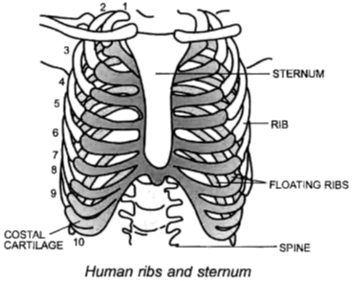
Human Body and Its Movements
- Books Name
- Class 6 Science Book
- Publication
- PathSet Publications
- Course
- CBSE Class 6
- Subject
- Science
Our body is capable of performing a wide variety of simple and complex functions. It is able to do so because of the internal structure that facilitates its movement.
Locomotion: Movement of organisms from place to place.
Human Body and Its Movements
Locomotion
There are two kinds of movements:
- The organisms move their body parts without changing their position.
- Animals move from one place to another. This kind of movement is called locomotion.
The human skeleton is the internal framework which is responsible for giving support, shape and protection to our bodies. It contains 206 bones, each playing a distinct yet important task. The skeleton can be classified into two parts called as the axial and the appendicular. The axial skeleton comprises of the central part of the skull, spine, and ribs and the appendicular skeleton consists of the arms and legs.
Locomotion in human body:
(i) Human skeleton: It forms a framework that gives shape and support to the body.
It consists of 206 bones. It protects internal organs.
(a) Skull: It protect the brain. It is rigid box made up of plates of bone firmly
joined together.
(b) Rib cage: It is flexible case of ribs. Each rib curves round the side of the chest
from the backbone and is joined in front to a plate of bone called sternum. Ribs are connected to one another by the muscles. Two lower most pairs of ribs are called ‘floating ribs’.
(c) Backbone: It is also called the spine or vertebral column. It is a chain of small bones called vertebrae. It protects the spinal cord, which carries messages between the brain and body. It also supports the skull, ribs and limbs.
(d) Limbs: It is made up of long bones with joints that allows them to move. They are mainly for support.
Bones of hands and legs: Bones of arms, thighs, etc., are long. They give strength to our body. Bones of fingers and toes are short. They help us in holding things. The hands and legs are constructed in same pattern as described below
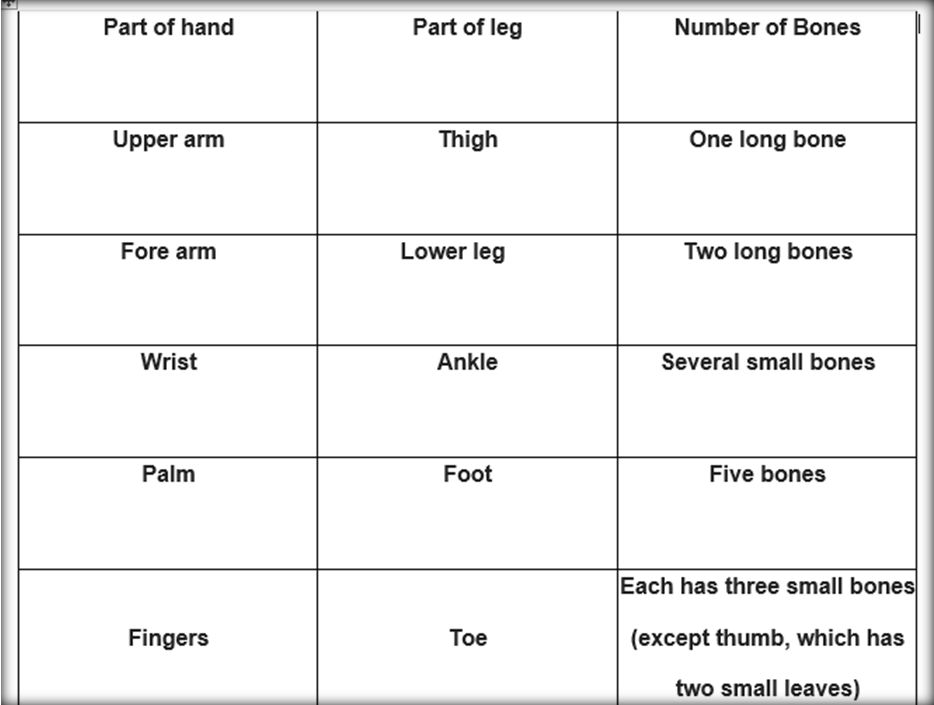
(i) Arms: Fore-arms is made up of two bones and hands have several small
bones. Shoulder bones have a pair of collar bones in front and a pair of
shoulder blades.
(ii) Legs: Lower leg is made up of two bones and feet have several small
bones. Hip bones or gridles bear weight of body and are attached to
thigh bones.
· Locomotion in other animals:
(i) Fish: Locomotion achieved by lateral contractions of the muscular body with a
final thrust by the tail. Fish swim by forming loops alternately on two sides of the body.
(ii) Birds: When the large flight muscles contract, they pull the wings down.
(iii) Snails: The muscular foot helps in locomotion.
(iv) Earthworms: Move by stretching out body in front and keeping the hind end fixed to the ground.
· The bones are moved by alternate contractions and relaxations of two sets of muscles.
· The bone joints are of various kinds depending on the nature of joints and direction of movement they allow.
· Strong muscles and light bones work together to help the birds fly. They fly by flapping their wings.
· Snakes slither on the ground by looping sideways. A large number of bones and associated muscles push the body forward.
· The body and legs of cockroaches have hard coverings forming an outer skeleton. The muscles of the breast connected with three pairs of legs and two pairs of wings help the cockroach to walk and fly.
Terms -
Limbs: The arms or legs of an animal.
Bones: These are the hard white structures below our skin that protect our internal organs. Bones are incapable of bending.
Joints: These are defined as the points at which two bones are fitted together. These are the points at which we can rotate and bend our bodies.
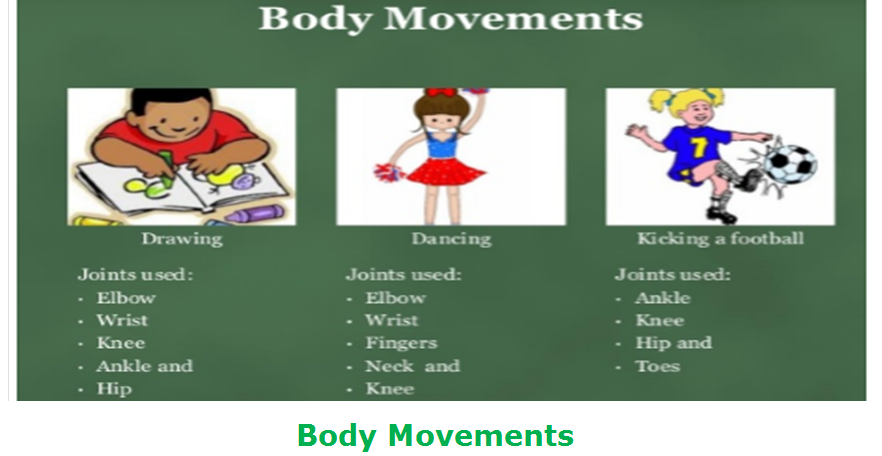
Joints
- Books Name
- CBSE Class 6 Science Book
- Publication
- Param Publication
- Course
- CBSE Class 6
- Subject
- Science
2. Apendicular Skeleton
It consists of two pairs of girdles and the bones of arms and legs.
• Girdles : Girdles are attached to the axial skeleton. These give support to the bones of the limbs. The girdle that supports the bones of arms is called the pectoral girdle. The pectoral girdle is made up of four shoulder bones, two clavicles and two scapulae. Each arm is supported by one scapula and one clavicle. The girdle into which the bones of legs are fitted is called the pelvic girdle.
• Bones of Arms : In the upper arm there is only one bone. It is called humerus. The humerus has a ball-shaped head that exactly fits into the cavity in the pectoral girdle. On the lower side, it has a broad surface which is connected to two bones of the lower arm. TIle broad bone towards the thumb is called radius. The narrow bone that is placed towards the little finger is called ulna. In the wrist, you will find small bones called carpals. The palm consists of five long bones called metacarpals. The fingers consist of small bones called phalanges.
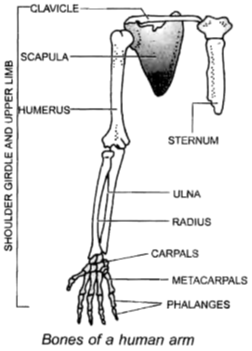
• Bones of Legs : The bone present in the thigh is the longest bone of the body. it is identified as femur. It has a ball-shaped head that can be fitted into a cavity formed by the pelvic girdle. The lower end of the femur is articulated with two leg bones called tibia and fibula. At the knee, there is an additional bone called patella. Down below in the ankle there are the tarsals. The foot is supported by metatarsals and toes of the foot that contain phalanges to support them.
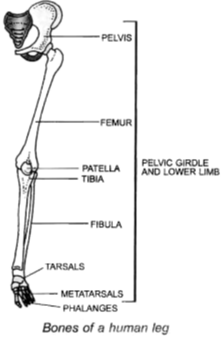
Functions of Skeleton :
l. It supports the body and gives definite shape to it.
2. It helps to protect delicate and vital organs like heart, lungs and brain.
3. With the help of muscles, it helps in the movement of body parts.
4. It is a store house of minerals and is the place for the formation of RBCs.
Joints
- Books Name
- Class 6 Science Book
- Publication
- PathSet Publications
- Course
- CBSE Class 6
- Subject
- Science
Joints
Joints: The point where two bones meet. Allow movement to take place. Bones are held together by ligaments.
(a) Movable Joints: It allows movement between bones and have cartilage
between them. Type of movable joints are:
(i) Hinge Joints: It allow movement only in one plane backwards and
forwards. Example: elbow joints, knee joints and joint between
phalanges of fingers and toes.
(ii) Ball and Socket Joints: It permit a circular movement. Example: the
shoulder.
(iii) Gliding Joints: It allow bones to slide a little. Example: bones inside
wrists and feet.
(iv) Pivotal Joints: Joint where the neck joins the head. It allows head to
move backward and forward and turn to right and left.
(b) Immovable or Fixed Joints: The bones cannot move at these joints. Example:
bones in skull, joint between upper jaw and rest of skull.
Types of Joints and their Location in Human Body
- A Pivot joint is a joint that rotates. Examples of pivot joints in the body in the neck that allows the head to rotate and the ones between the radius and ulna that allow forearm rotation.
- When bones can move along one axis, it indicates the presence of Hinge joint. e.g. Elbows and Knees.
- In the Ball and Socket joint, a partial spherical structure is present inside a socket allowing movement in all directions. e.g. hips and arms
- As the name suggests Fixed joint allows no movement to occur. e.g Skull
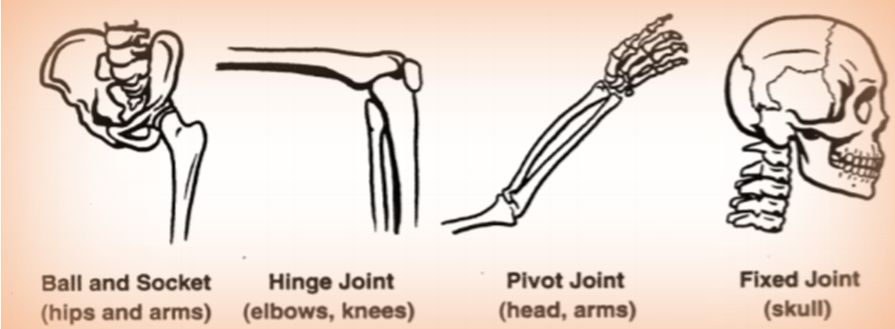
Figure 2: Types of Joints
Skeletal System
- Bones in our body form the framework that supports the whole body. This framework is called the skeleton.
- Our skeleton is made up of a number of bones and cartilages.
- There are about 650 muscles attached to the various bones in our body.
- The bones are hard and rigid.
- Cartilages are comparatively soft and elastic.
Functions of skeleton
- Skeleton system gives support to the body.
- It protects the inner organs.
- Together with muscles, it gives the body its shape.
- Red blood cells and some white blood cells are produced in the marrow of the bone.
Important Points to remember in a Human Skeleton:
- Bones provide support, protection, movement and perform several other functions.
- The bones in the skull (Cranium, Mandible, Maxilla) give protection to the brain.
- The long bones such as humerus, radius, ulna, tibia, fibula support the weight of body
- The carpals are located in wrist and tarsals are located in ankles. They are examples of short bones.
- The bones protecting the spine are called as the vertebral column. Cervical area (top 7 vertebrae), Thoracic (next 12), Lumbar (bottom 5 vertebrae), Sacrum (5 fused or stuck together bones) and Coccyx (the tiny bit at the bottom of the spine).
- The sternum and rib cage constitute the chest bones.
The skull: The skull has two main parts:
- Cranium: The bones of cranium are flat. They are held firmly like a zipper. It covers and protects the brain.
- Facial bones: The facial bones comprise the upper jaw, lower jaw and few other bones. The lower jaw is movable. The movement of lower jaw enables us to eat, talk and sing.
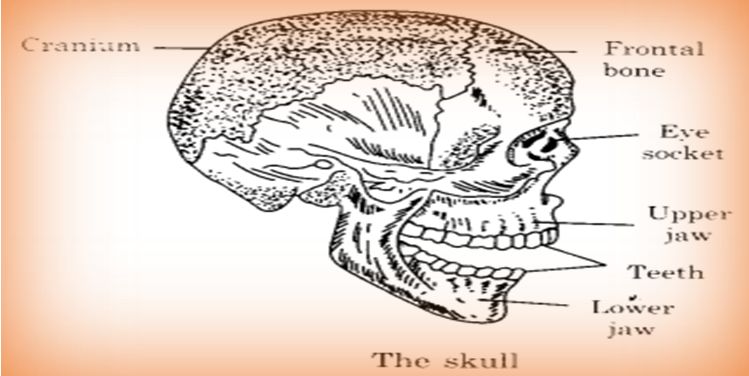
Eye sockets: The skull also includes a pair of eye sockets. These form a safe pocket for eyes.
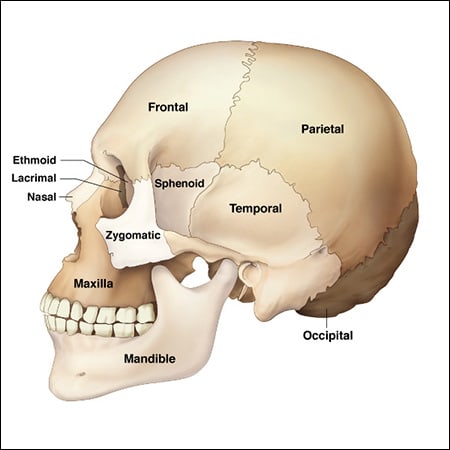
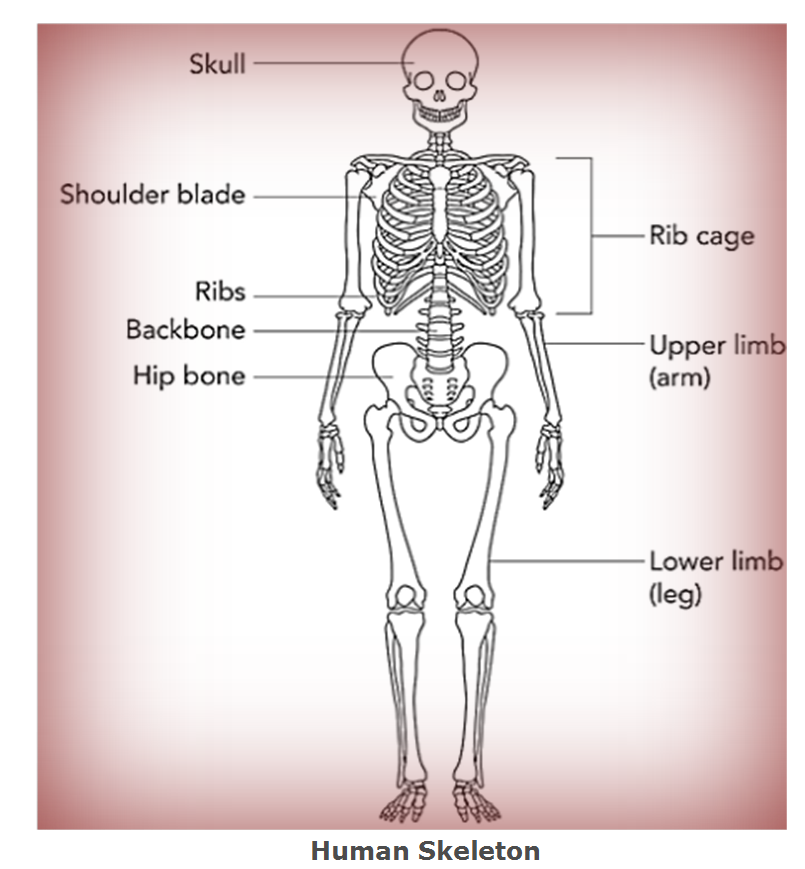
Some More Points to Remember

Gait of Animals
- Books Name
- CBSE Class 6 Science Book
- Publication
- Param Publication
- Course
- CBSE Class 6
- Subject
- Science
Joints
Joints are the place of articulation between two or more bones or between a bone and a cartilage. Due to the presence of a number of joints, the movement of the different body parts and the whole body is possible.
(a) Types of Joints :
(i) Fixed or immovable or fibrous joint : There is no space between the bones. The attached bones are tightly held with the help of white fibrous connective tissue. e.g. Joints of skull bones.
(ii) Slightly movable or cartilaginous joint : It is an articulation between the bones that allows very little movement. e.g. Between bones of vertebrae and pelvic girdle.
(iii) Movable joint or synovial joint : It is a joint which allows the movement of articulating bones such that they can move extensively upon each other.The space between bones is called synovial cavity. This cavity remains filled with a viscous and slippery synovial fluid. These are of following types :
(A) Ball & socket joint : One bone forms a ball like head that fits into a socket formed in the other bone. The bone with head can move nearly in all the directions. e.g. Shoulder joint, hip joint.
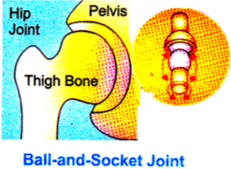
(B) Hinge joint : This joint allows movements in one plane only. e.g. Elbow joint & knee joint.
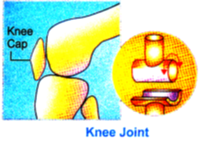
(C) Pivot joint : This joint allows only a rotatory movement of one bone on the other stationary bone. e.g. Atlas and axis vertebrae.
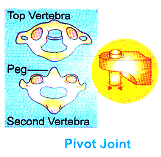
(D) Angular joint / Ellipsoid / Condyloid joint - This allows movement in two directions - side to side and back & forth. e.g. Wrist joint.
(E) Gliding joint : This joint permits sliding movement of two bones over each other, e.g. Carpal in wrist and tarsals in ankle.
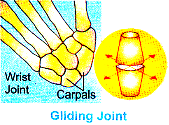

Gait of Animals
- Books Name
- Class 6 Science Book
- Publication
- PathSet Publications
- Course
- CBSE Class 6
- Subject
- Science
Gait of Animals
Some animals do not have bones. They have muscles which help to extend and shorten the body. During movement, animal first extends the front part of the body, keeping the rear position fixed to the ground. After that animal fixes the front end and releases the rear end. Now animal shortens the body and pulls the rear end forward. During this practice, animal moves forward by a small distance.
Rib cage: Ribs join with the chest bone and the backbone together to form a box. This is called rib cage.
1. Earthworm:
- Does not have bones
- Earthworm body is made up of rings
- A slimy substances secreted by its body aids movement (NSO)
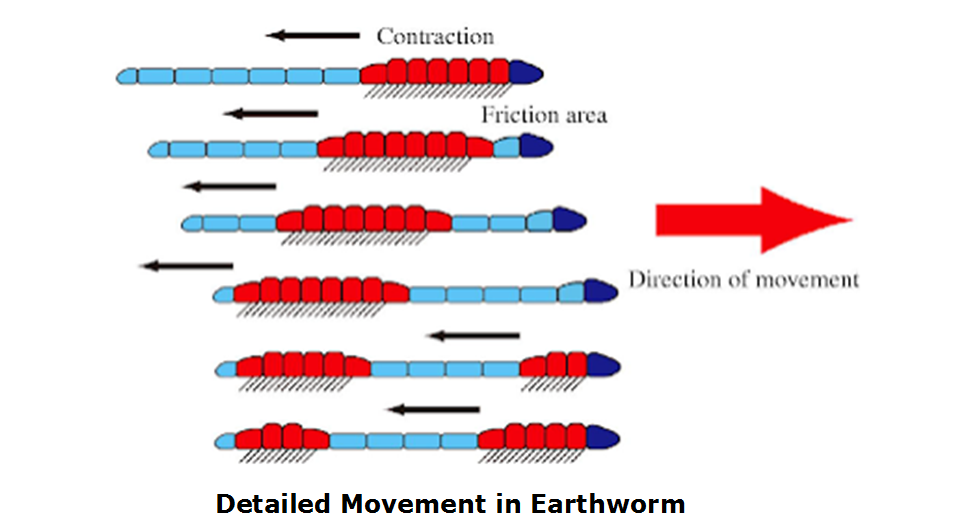
2. Snail:
- It has a slimy body, which does not have bones.
- The shell of the snail does not help in movement. It has to be carried along.
- The foot of the snail is a thick structure and is made up of strong muscles.
- A muscular organ called ‘Foot’ helps in locomotion.
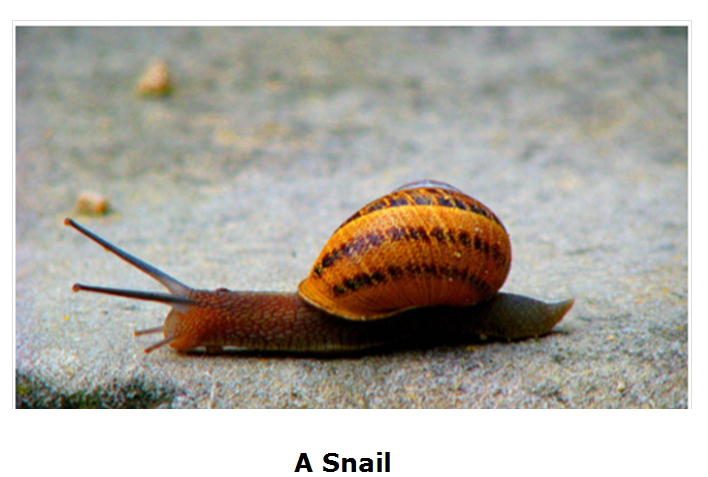
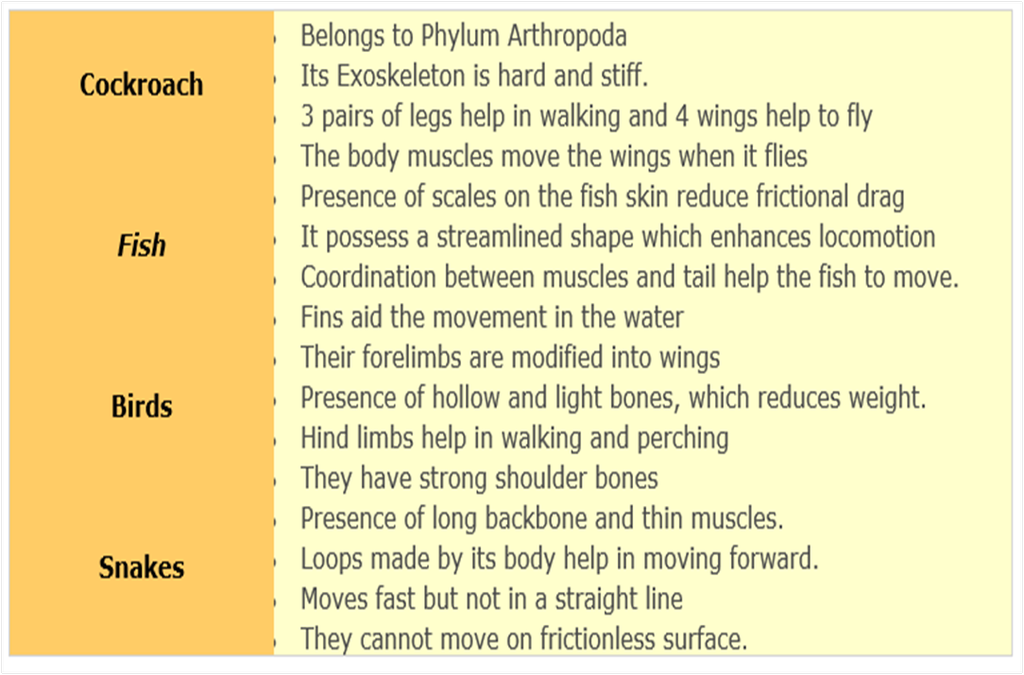
SUMMARY
Backbone: Backbone or vertebral column is composed of 33 small ring like bones called vertebrae. It is a hollow bony tube.
Ball and socket joint: A joint in which rounded end of one bone fits into the cavity of the other bones.
Bristles: Hair like structures projecting out of the body of earthworms. With the help of these, it fixes itself with the ground.
Cartilage: It is the additional part of the skeleton that is not as hard as the bones and which can be bent also.
Cavity: The bowl like part (hollow space) in the shoulder bone allows the rounded end of the arm bone to fit into it to form ball and socket joint.
Fixed joints: Some of the joints allow no movement. These are called fixed joints, e.g., joints in skull and upper jaw.
Hinge joint: Hinge joint is found in the fingers, elbow and knee. It allows movement only in one direction.
Muscle: Muscles are involved in the movement of bones.
Outer Skeleton: Skeleton found outside the body is called outer skeleton, e.g., hair and nails in human.
Pelvic bones: Bones in the hip region are called pelvic bones.
Pivotal joint: The joint where our neck joins the head is a pivotal joint.
Rib cage: Ribs join the chest bone and the backbone together to form a box. This is called rib cage.
Shoulder bones: The two bones of the shoulders are called shoulder bones.
Skeleton: The framework of the body which is made up of bones and cartilage is called skeleton.
Streamlined: The body shape where body tapers at both ends is called streamlined body, e.g., body of birds and fish.
Movement In Different Animals (Part -1)
- Books Name
- CBSE Class 6 Science Book
- Publication
- Param Publication
- Course
- CBSE Class 6
- Subject
- Science
Movement In Different Animals
Movement of Invertebrates
(a) Movement in Amoeba :
Amoeba is an unicellular organism which can move with pseudopodia (false feet).
(b) Movement in Earthworm :
• It lives in moist soil, water and burrows. Its body is elongated, segmented and bilaterally symmetrical. The body of an earthworm is made up of a large number of segments. An earthworm does not have bones. On the lower surface of its body, a number of tiny hair like bristles are present. These bristles help it to get a good grip on the surface of the ground.
• Earthworm doesn’t have bones. It has muscle which help in locomotion with setae (hook like chitinous structure). During movement it first extends the front part of the body keeping the rear portion fixed to the ground with the help of setae. Then it fixes the front end and releases the rear end. It then shortens the body and pulls the rear end forward.
• By repeating such expansions and contractions it can move through soil.
(c) Movement in Snail :
• Snail is a molluscan which doesn’t has bones but has muscles. A shell is present as outer skeleton During movement a thick muscular foot comes out of the shell’s opening.
• The foot produces a slimy substance called mucous. It crawls smoothy on the layer of mucous. The foot is present under its belly. It looks as if the snail is moving on its belly. A trail of mucous is left behind when it crawls on a surface. By the contraction & expansion of the foot muscle it can do slow movement at a substratum.
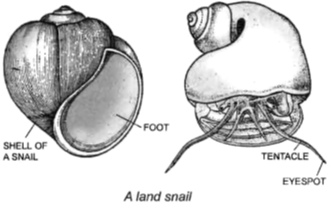
(d) Movement in Cockroach :
• Cockroach is an arthropod which has jointed appendages. It has three pair of legs and two pairs of wings attached to the thorax.
• These legs help it to run very fast. The body of a cockroach is covered with a hard outer skeleton.
• There are two pairs of wings attached to its breast. It can fly only short distances. Thus, a cockroach can walk, climb as well as fly in air.
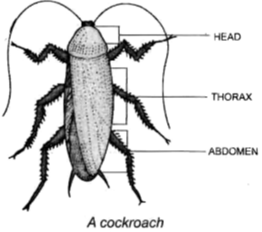
(e) Movement in Vertebrates :
• Animals which possess a backbone or vertebral column are called vertebrates. Examples of vertebrates are fishes, frogs, lizards, snakes, monkeys, cows human beings etc.
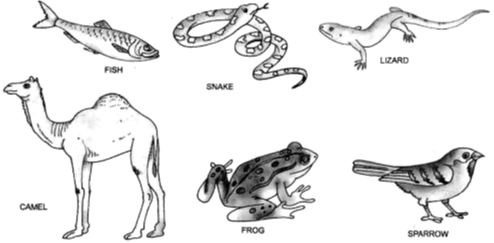
Movement In Different Animals (Part -2)
- Books Name
- CBSE Class 6 Science Book
- Publication
- Param Publication
- Course
- CBSE Class 6
- Subject
- Science
(f) Movement in Fish :
• Fishes are aquatic animals. Head and tail of the fish are smaller than the middle portion of the body. This body shape is called stream lined which is helpful to reduce friction during movement. It has caudal, dorsal (impaired), pectoral, pelvic (paired) fins.
• Fishes have skeletal & muscular system both. During swimming, muscles make the front part of the body curve to one side and the tail part swings towards the opposite side. Then quickly the body and tail curve to the other side.
• This makes a jerk and pushes the body forward. A series of jerks make the fish swim ahead. This is helped by fins of the tail.
• Thus paired fins help in the maintaining balance of body during swimming while impaired provide jerk. Fish lacking bones : In sharks, skeleton is made entirely of cartilage.
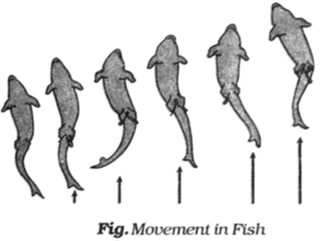
(g) Movement in Snake :
• Snakes are reptiles which can do creeping movement with the help of skeletal and muscular system. Muscles are interconnected to long backbone, ribs and skin. The snakes body curves into many loops. Each loop gives it a forward push by pressing against the ground. These movements occur rapidly in its body that show a very fast movement.
(h) Movement in Birds :
• Birds (Aves) can fly in the air and walk on the ground and some birds like duck can swim in water also. In birds skeletal (with hollow bones) and muscular system are present. Forelimbs are modified into wings. Shoulder bones are strong and breast bones are modified to hold muscles of flight which are used to move the wings up and down. While bones of hind limbs are typical for walking and perching.
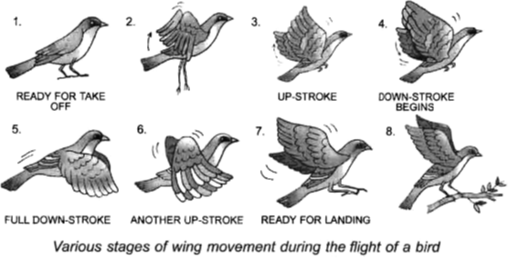
Dislocation
In spite of good natural articulation of bones to one another, sometimes because of a careless movement or a bad fall, the bones at the moveable joints slip out of their position. This is called dislocation. A person who has a dislocated bone may have a sprained or damaged ligament.

 Param Publication
Param Publication
 PathSet Publications
PathSet Publications
